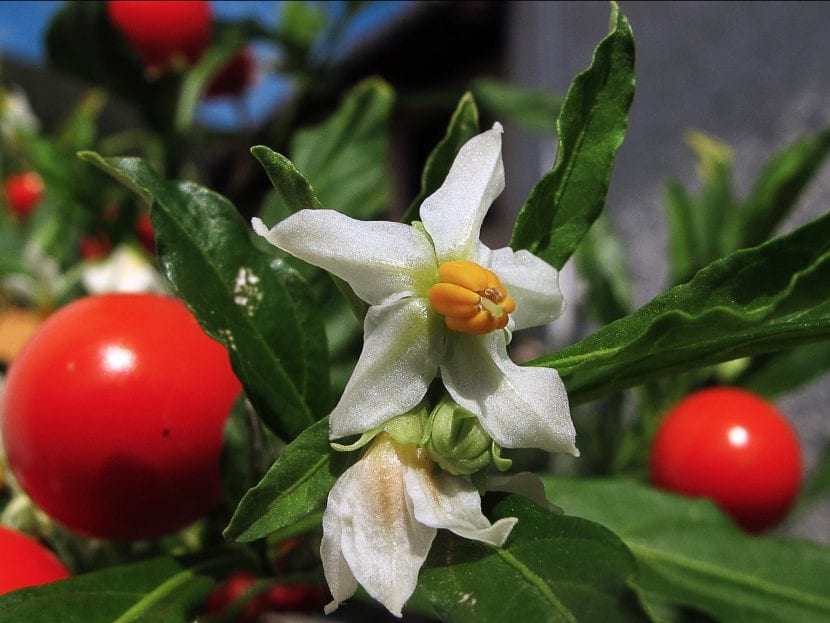
Image - Flickr / jacinta lluch valero
The solanum They are plants that are widely cultivated in orchards and flowerbeds, since there are many species that produce edible fruits and that, in addition, can be had without problems in containers.
Maintenance is not complicated, but we hope that now it will be a little less with what we are going to tell you next 🙂.
Origin and characteristics
Our protagonist is a genus of plants that can grow as herbs, shrubs or as climbers with or without thorns, originating above all in South America, but also growing in North America, Central America, eastern Brazil, the West Indies, Australia, Africa and Madagascar. There are about 1250 species, and all of them They are characterized by the type of flower, which are composed of five white, green, yellow, pink or purple petals, and by a fruit that is a globose berry and fleshy inside which are numerous small seeds.
The roots can be rhizomatous or tuberculous, and its leaves are alternate, simple to pinnatilobed or compound, green in color.
Main species
Solanum nigrum
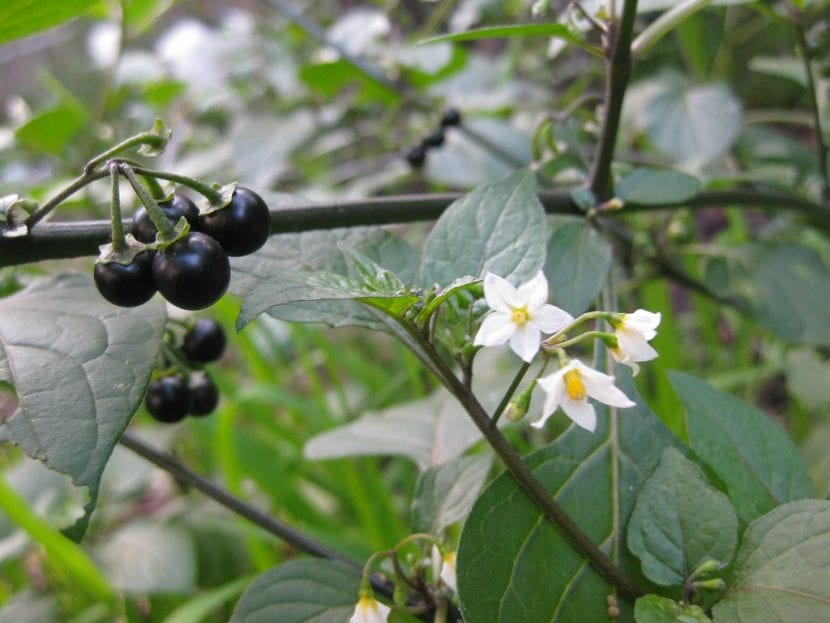
Image - Flickr / The Weed Forager's Handbook
Known as nightshade, it is an annual herb that grows between 30 and 80cm tall, and that produces black fruits that, once cooked, can be used to make jams and preserves.
Solanum tuberosum
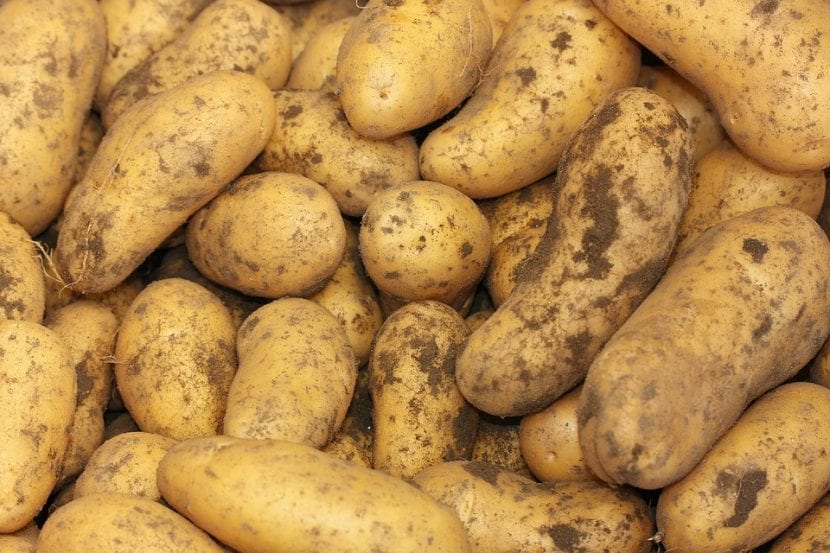
Known as potato or potato, it is a tuberous and perennial herb that can be up to 1 meter long. The tuberculous roots, which are the potatoes themselves, are those used in cooking, both cooked and fried.
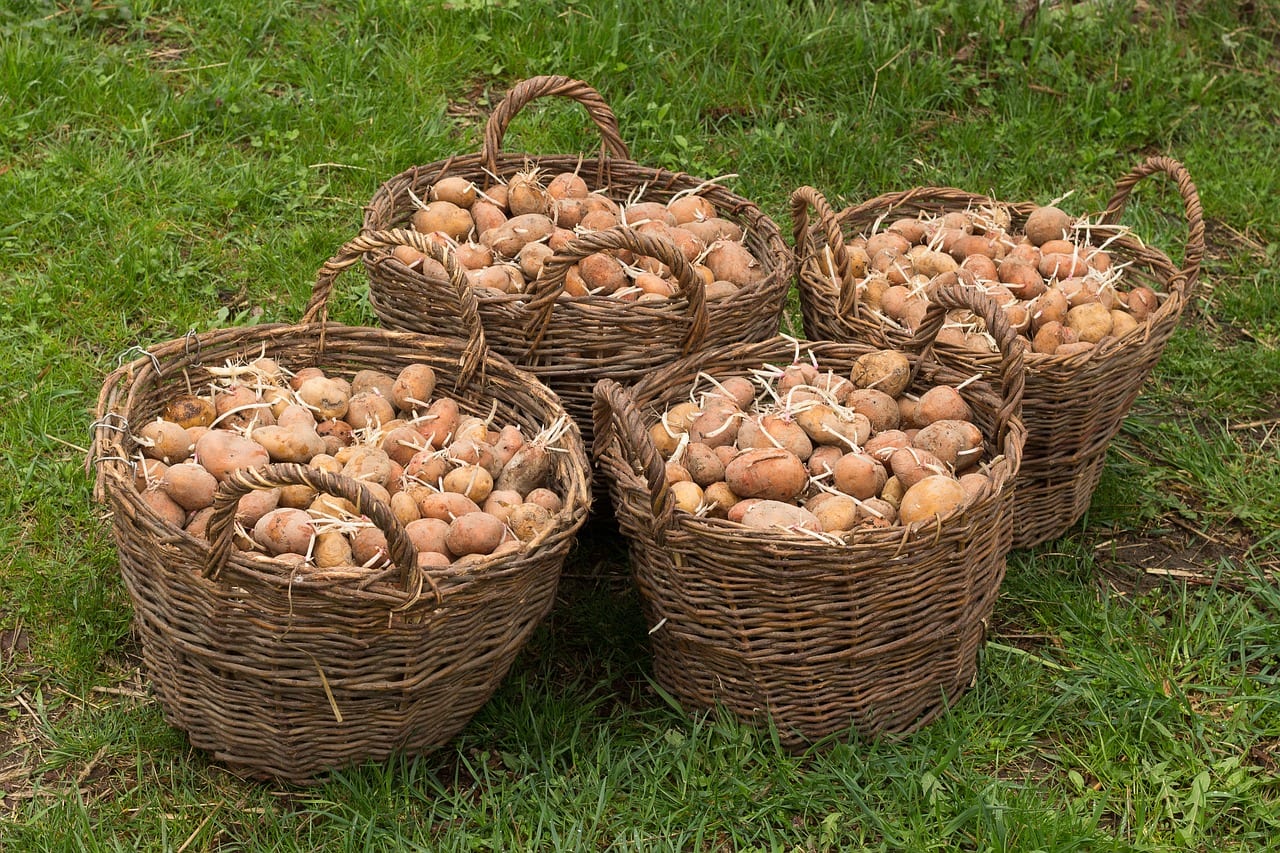
Solanum
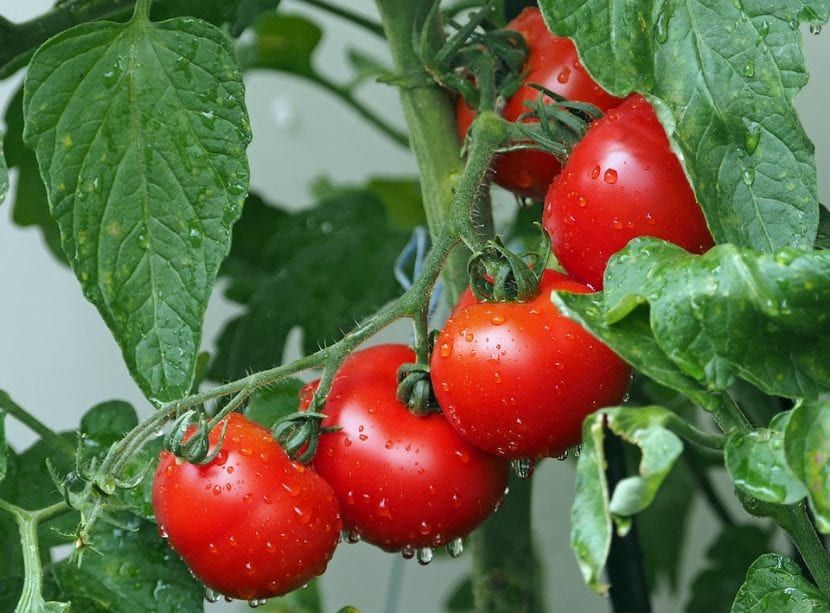
Known as tomato, tomato, or tomato, it is an annual or perennial herb depending on the climate that can reach a height of up to 2,50 meters. It produces berries, usually red, that are edible, ideal for salads, toasts, etc.
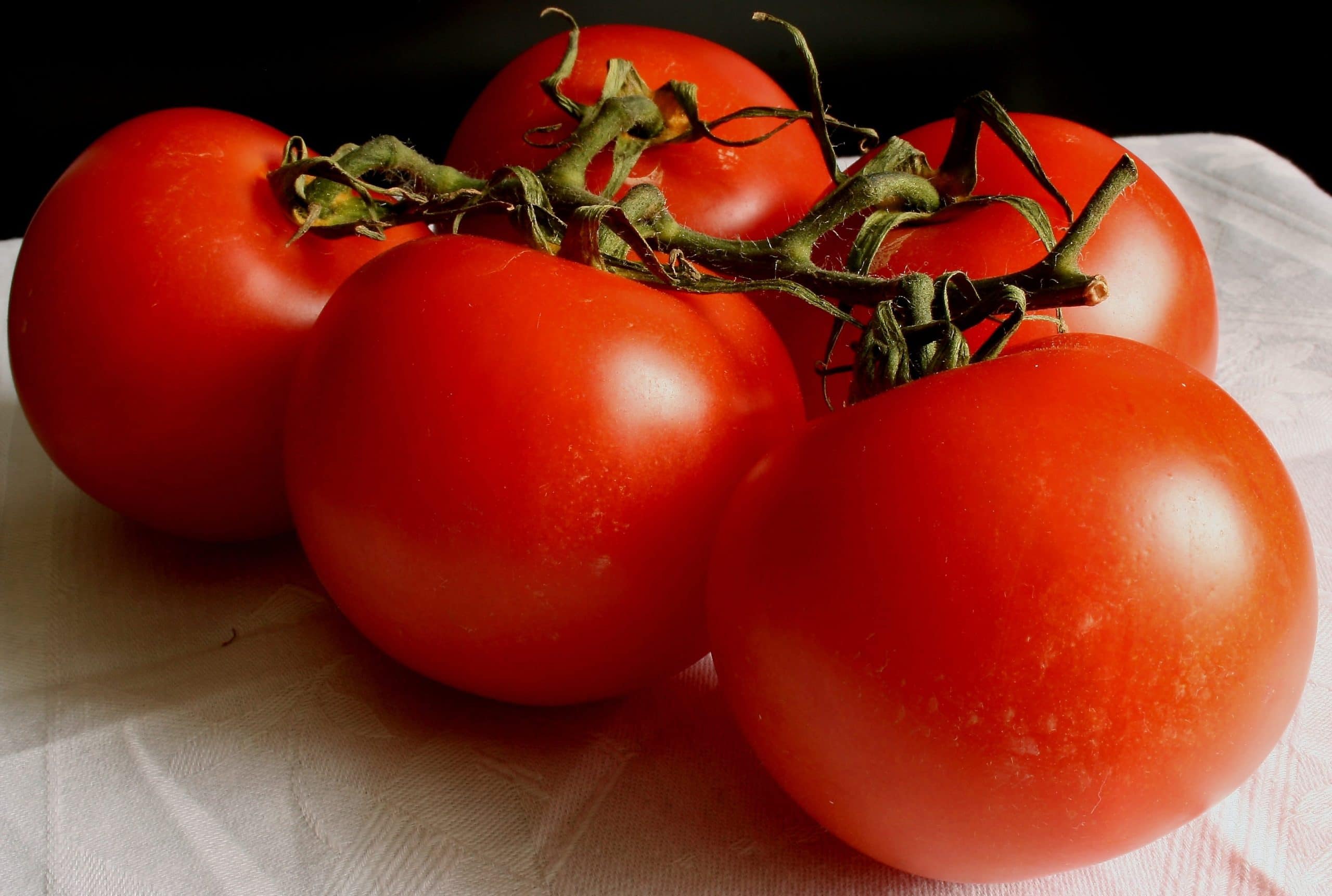
Solanum jasminoides
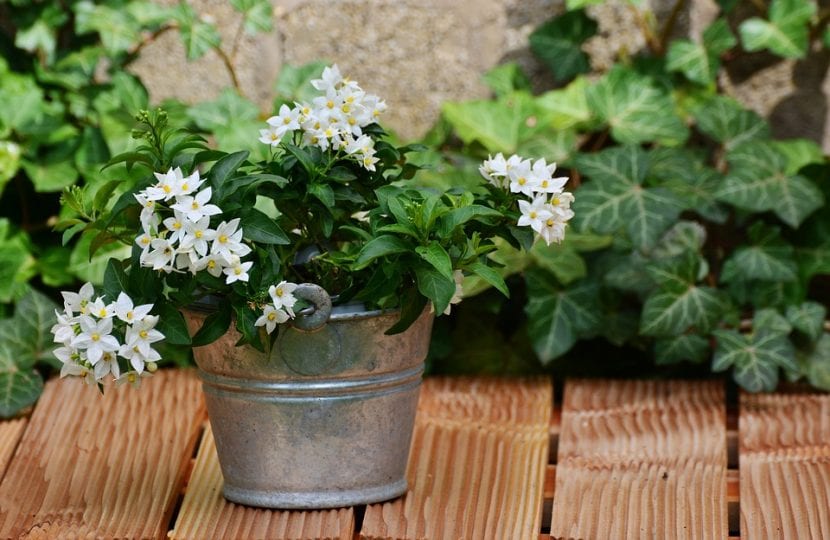
Now called Solanum laxum, it is an evergreen climbing plant up to 5 meters long It is used as an ornamental for its flowers, which are bluish, whitish or lilac. It is known as false jasmine.
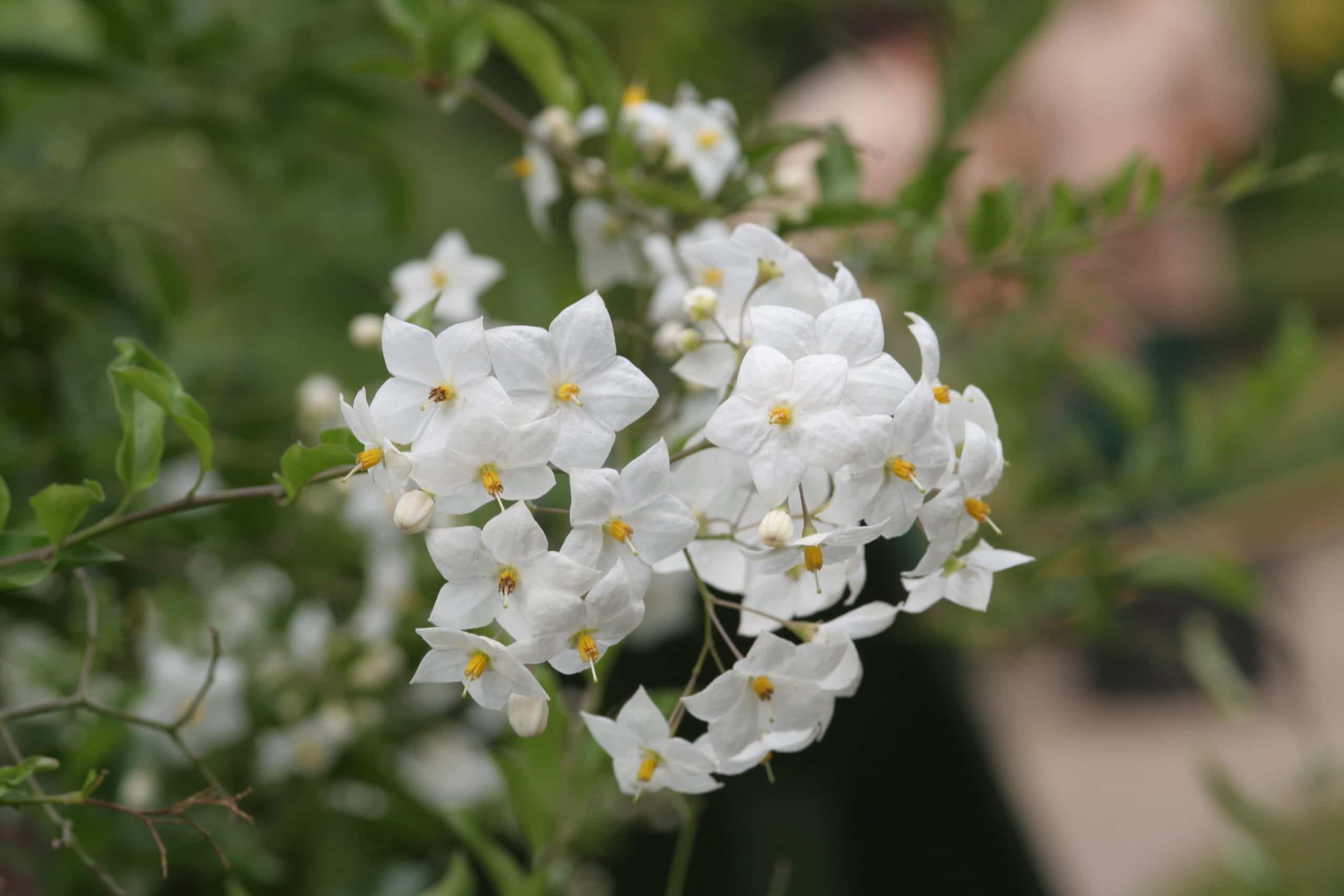
Solanum dulcamara
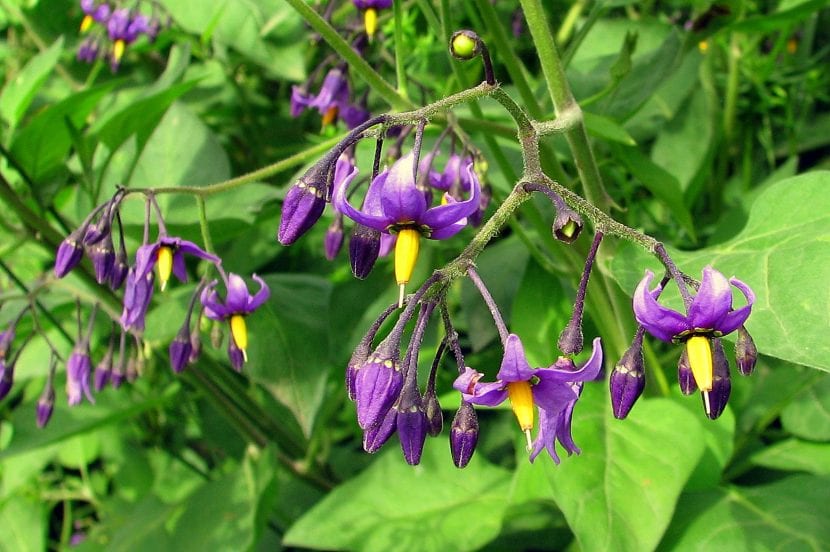
Image - Wikimedia / Pascal Blachier
Known as dulcamara, it is an evergreen climbing plant that it does not usually exceed 2 meters in length. It is used as an ornamental, as it produces very pretty purple flowers.
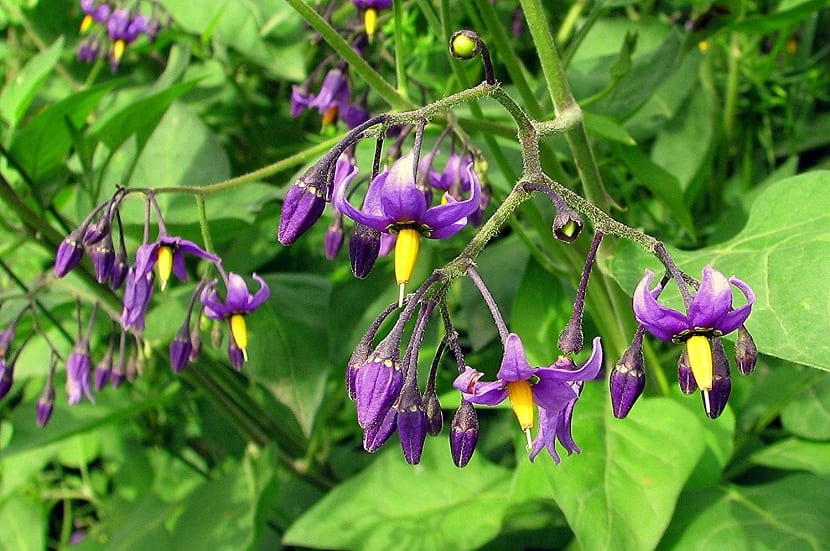
Solanum pseudocapsicum
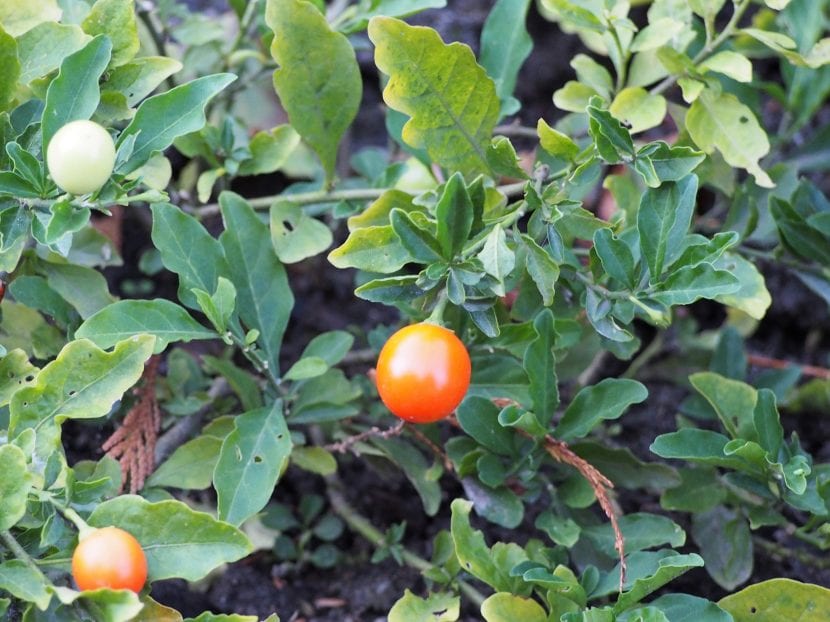
Image - Wikimedia / Agnieszka Kwiecień, Nova
Known as Jerusalem cherry, Madeira or myrtle, it is an evergreen shrub that does not usually exceed 2 meters in height. It produces fruits that are reminiscent of tomatoes, but smaller, about 10-15mm that are not edible.
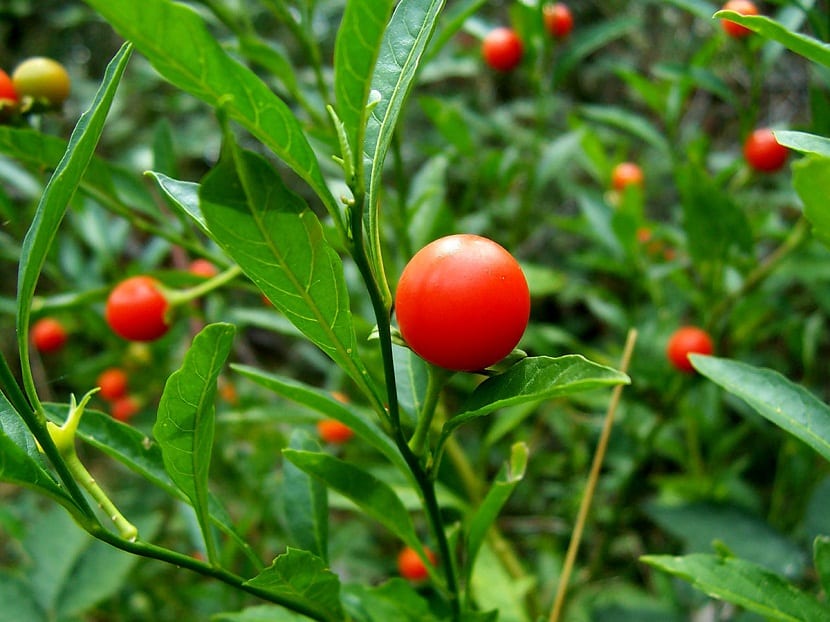
Solanum melongena
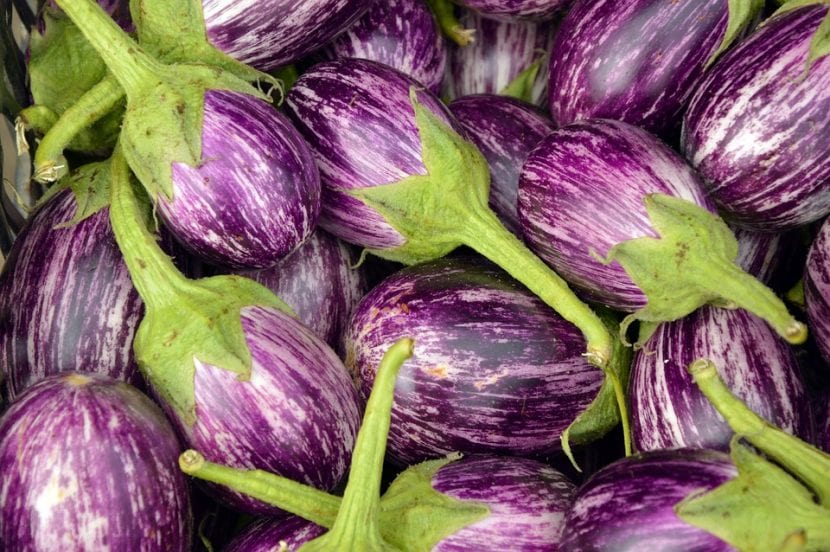
Known as aubergine, it is an annual, thorny herb that extends about 2 meters. It produces berries 5 to 30cm long, purple, black, purple, white or green that are used to prepare various dishes, such as baked stuffed aubergine.
Solanum muricatum
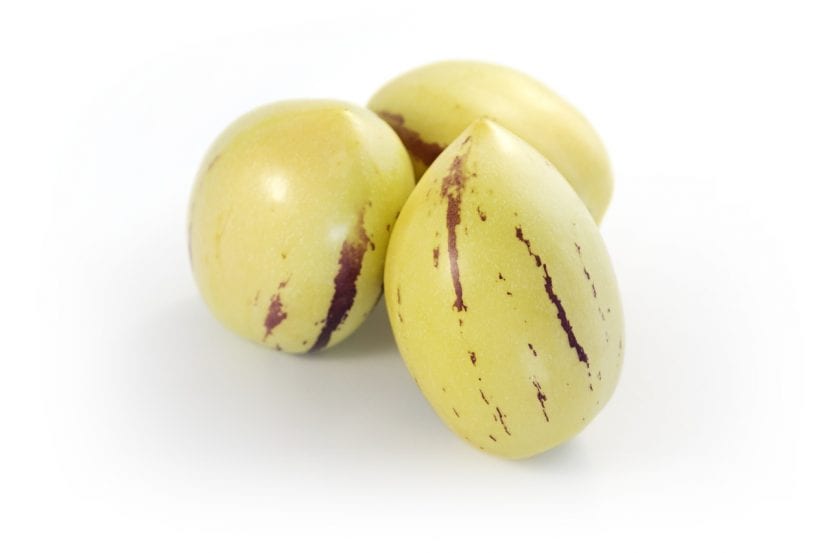
Known as pear melon, cucumber melon, sweet cucumber, fruit cucumber or tree melon, it is an evergreen shrub that grows up to 2 meters high. It produces whitish edible berries, which are eaten fresh, in salads or in elaborate desserts.
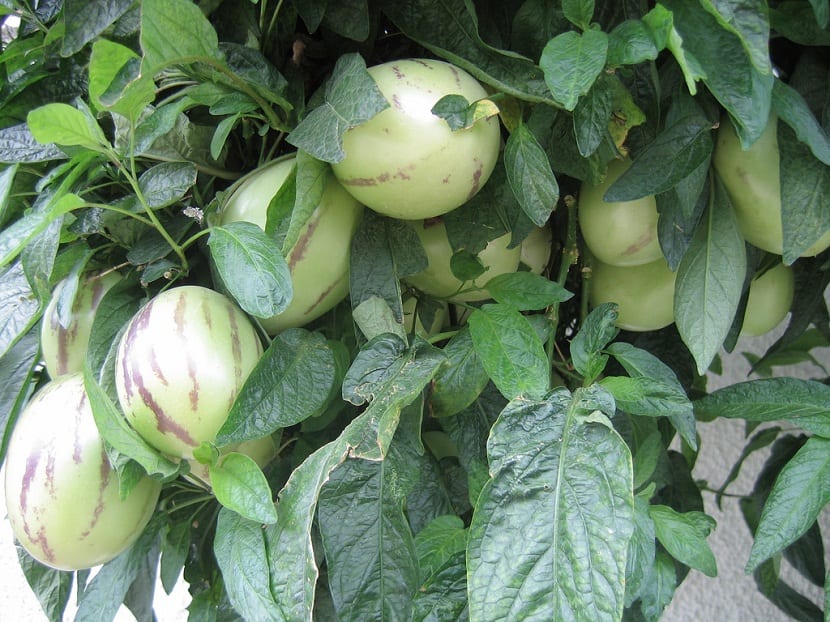
Solanum villosum
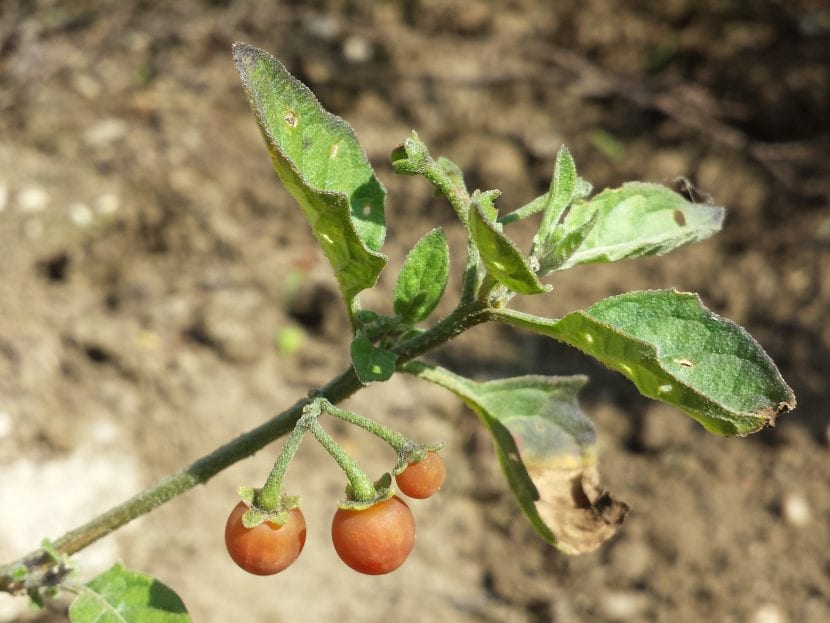
Image - Wikimedia / Stefan.lefnaer
It is an annual herb of about 70cm tall which produces red-orange berries.
solanum bonariense
Known as granadilla, Santa María grass, solana or garden orange trees (not to be confused with the fruit tree of the Citrus genus) that grows up to 2-3 meters tall. It produces a globose berry of orange color.
Solanum malacoxylon
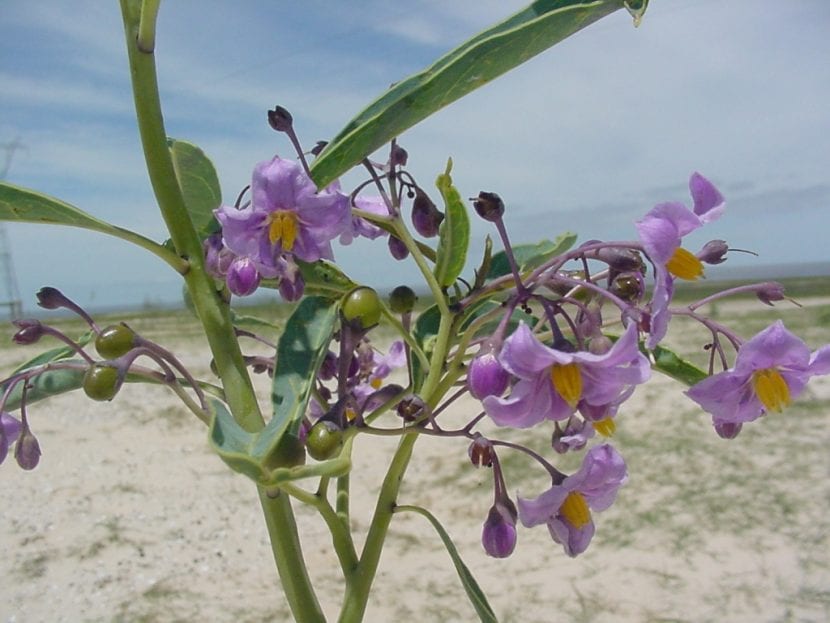
Image - Wikimedia / berichard
Known as white peach, it is a rhizomatous plant of 1-2 meters high It produces blackish blue fruit that is used in sauces and stews.
Solanum rantonneti
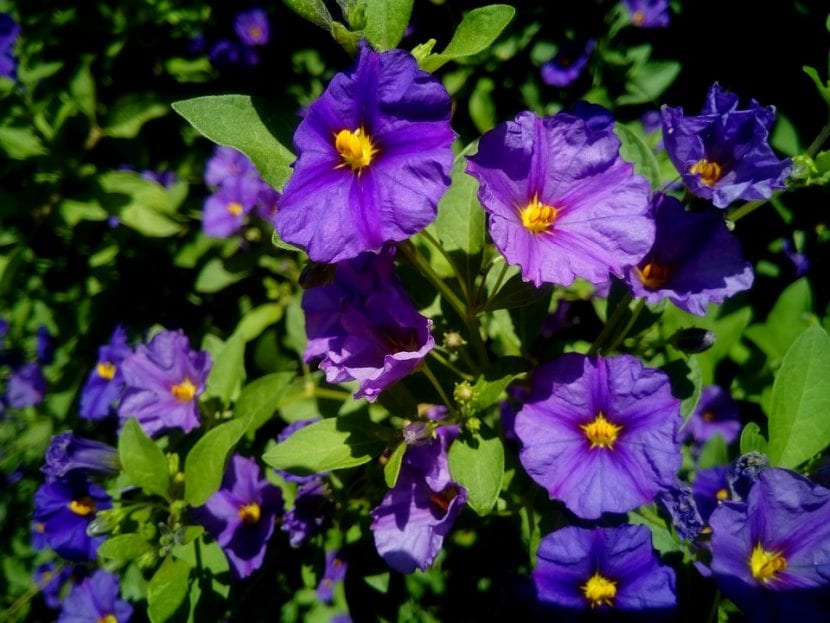
Known as blue-flowered solano or perennial dulcamara, it is an evergreen shrub that can grow as a climber or as a ground cover. Grows up to 2-3 meters tall, and produces hanging bluish flowers. It is used as an ornamental plant.
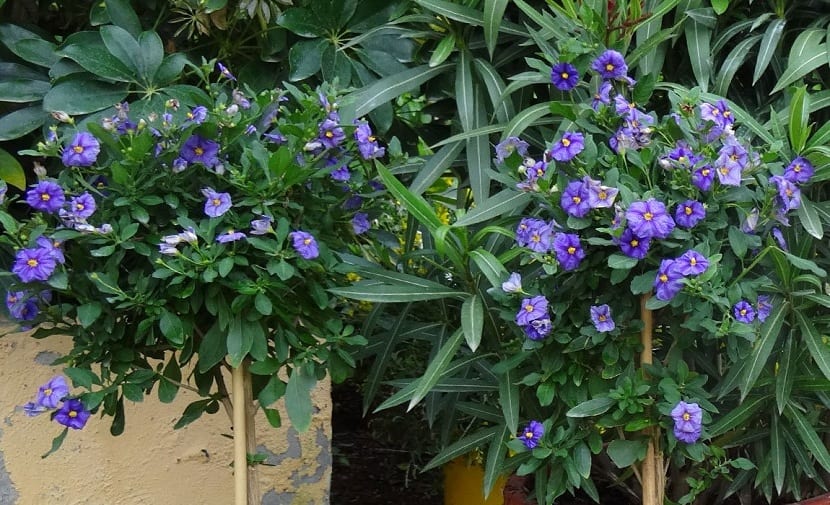
How are they cared for?
Do you want to have a copy of Solanum? Then we recommend you provide the following care:
Location
It is important that it is outside, in full sun.
Earth
- Orchard or garden: the soil must be fertile, with good drainage.
- Flower pot: use mulch (for sale here).
Irrigation
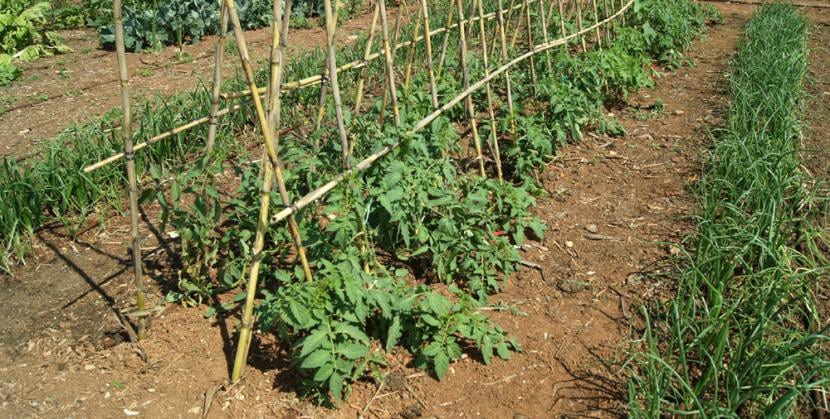
Must be frecuente, especially in summer. The ideal is to always keep the soil slightly damp, so, depending on the climate, we recommend watering an average of 5 times a week during the hottest season, and an average of 2-3 times a week the rest of the year.
Subscriber
Throughout the season you have to pay with organic fertilizers, such as compost, mulch, cow manure, etc.
Multiplication
The Solanum multiply by seeds, and sometimes also by tubers, in spring.
Seeds
The seeds are to be sown in a seed tray filled with mulch. Keeping the substrate moist, they will germinate in about 5-7 days.
Tubers
Some Solanum, like potatoes, can be easily multiplied by separating the tubers from the rest of their root system and then planting them in another area of the garden. They must be at a depth of about 10cm more or less.
Pests
It can be affected by aphids, Red spider, White fly, borers y blind chicken. All can be treated with diatomaceous earth (for sale here) or potassium soap (for sale here).
Management
If you water excessively and / or wet the leaves, flowers and fruits, you may have powdery mildew, botrytis, mildew, alternariasis, fusarium, bacteria or virus.
It is necessary to control the risks and to do treatments with fungicides. In the case of bacteria or viruses, the affected parts must be cut.
Rusticity
Resists cold but not frost.
What uses is it given?
Ornamental
There are several species that are used as garden or terrace plants, such as Solanum rantonnetii or the Solanum jasminoides. Whether grown in the ground or in pots, they will look great 🙂.
Culinary

It is without a doubt the most popular use. Potatoes, tomatoes, aubergines ... all these are edible berries that are They take advantage of the kitchen to prepare various recipes.
Do you dare to cultivate it?